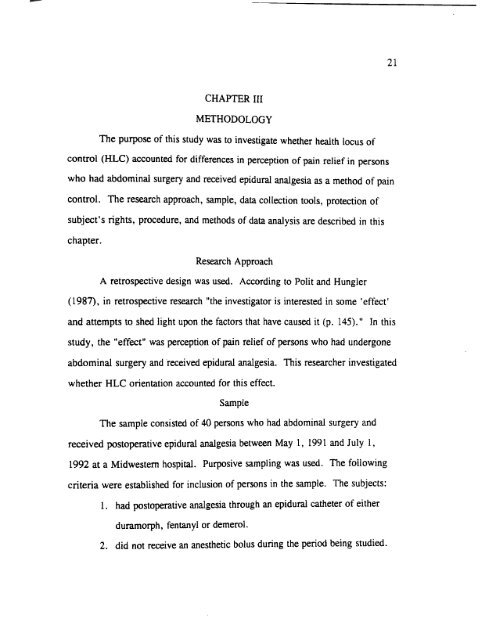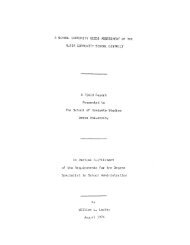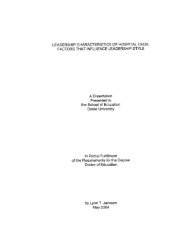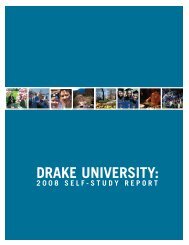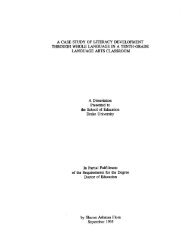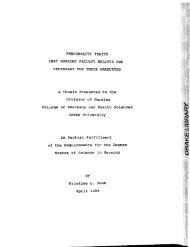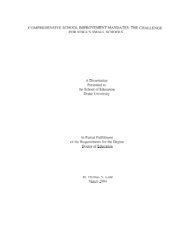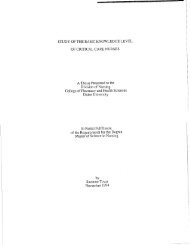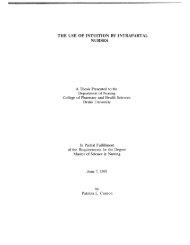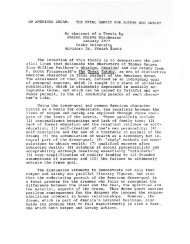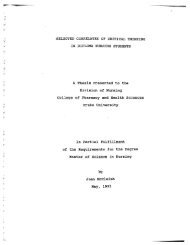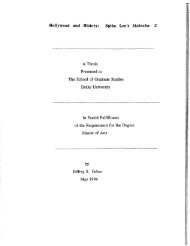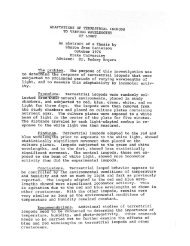LOCUS OF CONTROL ORIENTATION AND LEVEL - Drake University
LOCUS OF CONTROL ORIENTATION AND LEVEL - Drake University
LOCUS OF CONTROL ORIENTATION AND LEVEL - Drake University
Create successful ePaper yourself
Turn your PDF publications into a flip-book with our unique Google optimized e-Paper software.
CHAPTER 111<br />
METHODOLOGY<br />
The purpose of this study was to investigate whether health locus of<br />
control (HLC) acfoun ted for differences in perception of pain relief in persons<br />
who had abdominal surgery and received epidural analgesia as a method of pain<br />
control. The research approach, sample, data collection tools, protection of<br />
subject's rights, procedure, and methods of data analysis are described in this<br />
chapter.<br />
Research Approach<br />
A retrospective design was used. According to Polit and Hungier<br />
(1987, in retrospective research "the investigator is interested in some 'effect'<br />
and attempts to shed light upon the factors that have caused it (p. 145)." In this<br />
study, the "effect" was perception of pain relief of persons who had undergone<br />
abdominal surgery and received epidural analgesia. This researcher investigated<br />
whether HLC orientation accounted for this effect.<br />
Sample<br />
The sample consisted of 40 persons who had abdominal surgery and<br />
received postoperative epidural analgesia between May 1, 1991 and July I,<br />
1992 at a Midwestern hospital. Purposive sampling was used. The foilowing<br />
criteria were established for inclusion of persons in the sample. The subjects:<br />
I. had postoperative analgesia through an epidural catheter of either<br />
durarnorph, fentanyl or demerol.<br />
2. did not receive m anesthetic bolus during the period being studied.


